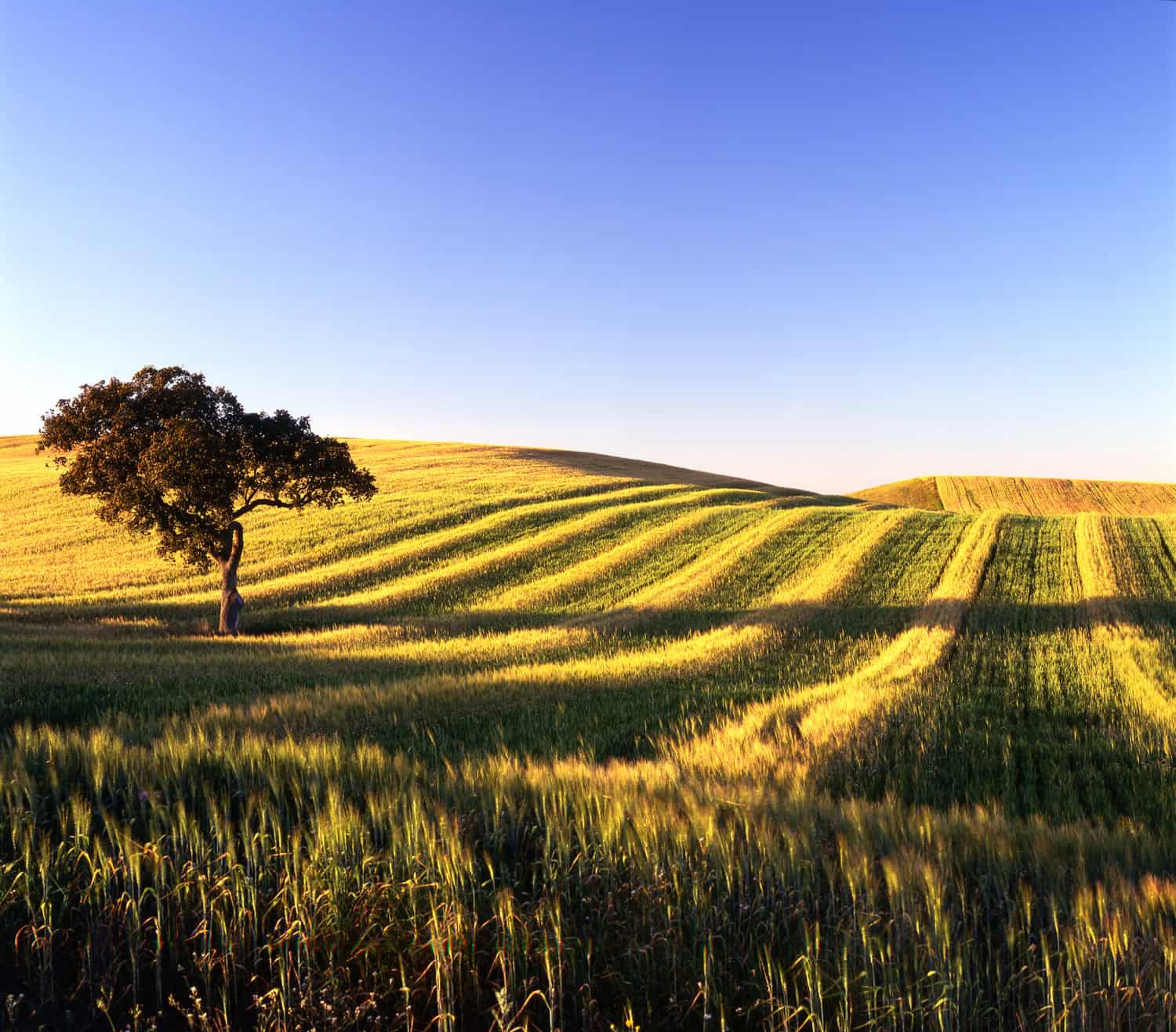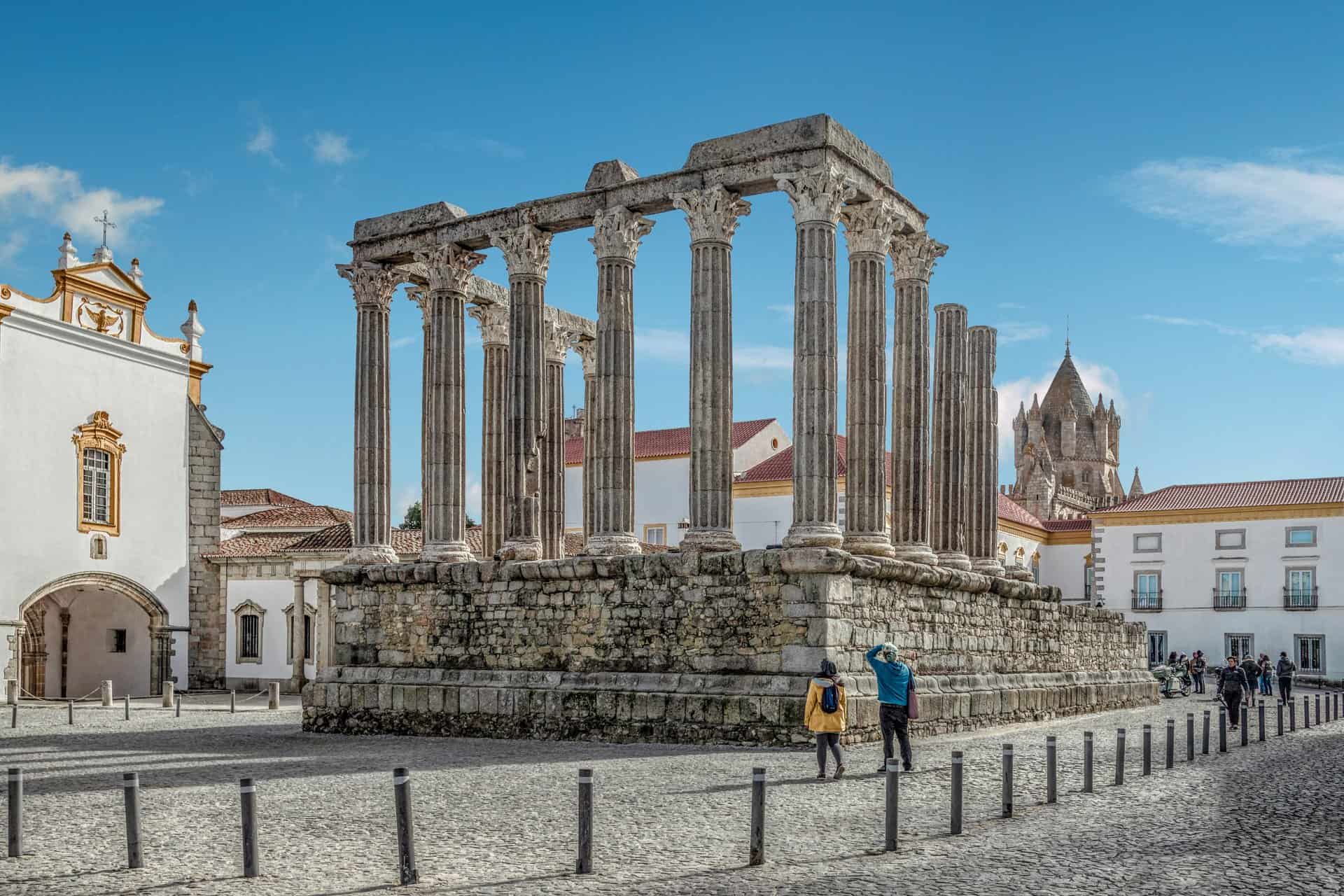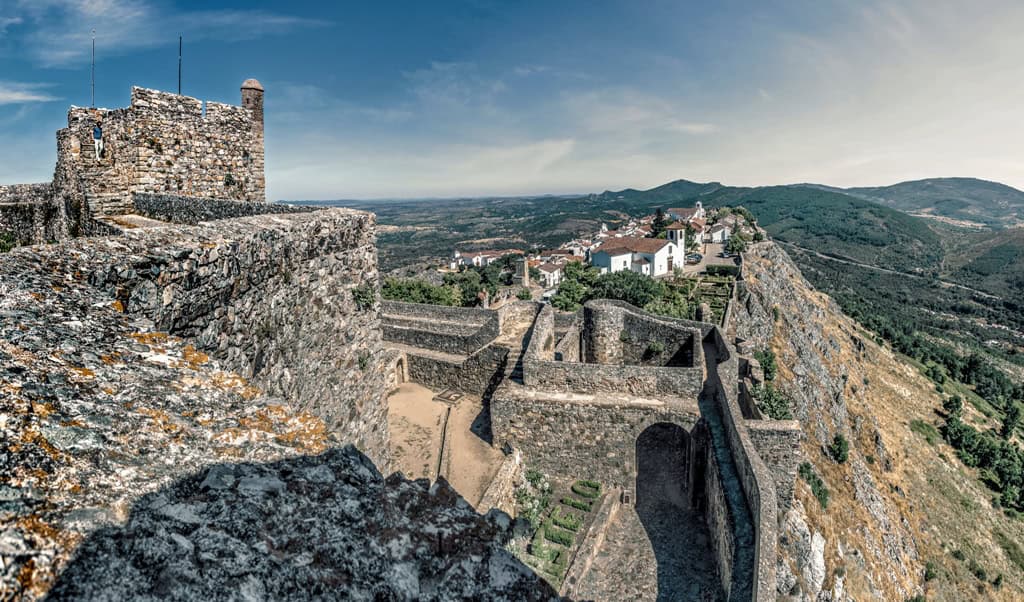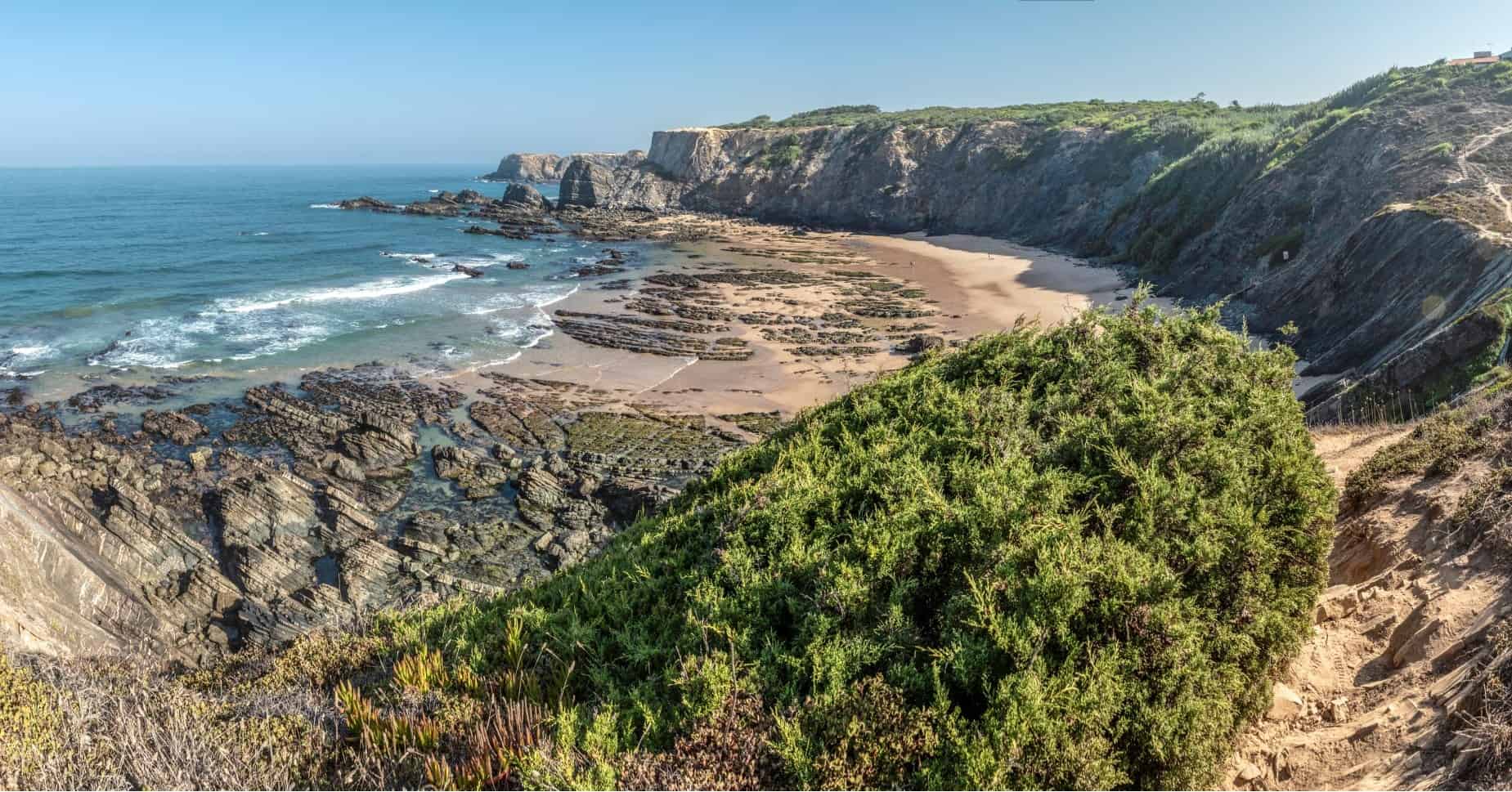Alentejo is often referred to as the breadbasket of Portugal – a sparsely populated agricultural region of open plains, cork forests and sleepy rural villages.
Alentejo covers almost one-third of Portugal and its name was once a literal description – derived from ‘alem’ meaning ‘beyond’ the Ribeira Tejo – from a time when the Tagus river demarcated the end of Lisbon and the start of Alentejo.

Its warm Mediterranean climate, rich soils and easily worked terrain encouraged the Romans to farm these lands in pre-Portuguese times, and their wheatfields and olive groves successfully fed an empire. Safe sailing along the Atlantic coast with access inland by boat also saw the settlements of Troia, Alcacer do Sal and the Sado estuary become the centre for the Roman fishing industry. Their vineyards were also extremely fruitful, inspiring a recent renaissance in Roman-style Talha wines: organic wines which are fermented in clay amphoras with oversized cork stoppers. Over 50% of the world’s cork comes from Alentejo and it’s an incredibly sustainable product – the cork oak tree (the ‘sobreiro’) isn’t felled or damaged when the cork is harvested, and trees live for around two hundred and fifty years.

The regional capital is the medieval city of Evora – renowned for its historic, UNESCO-protected architecture: the 1st century BC Templo Romana de Evora (also known as the Temple of Diana), the Se de Evora (Portugal’s largest medieval cathedral) and the Manueline Convento de Santa Clara. The Igreja de Sao Francisco houses the infamous Capela dos Ossos – the Chapel of Bones, whose walls and vaulted ceilings are decorated with 5000 human skeletons: a Francsiscan friar’s macabre solution to a lack of building space in the 16th century. To the northeast, Marvao is considered one of the most beautiful walled towns in Europe – sitting high on a granite escarpment, it’s natural defensive position saw the town play a key role in numerous cross-border wars with neighbouring Spain. Surprisingly, the 13th century castle and walls are mostly intact, and its quant cottages and picturesque views belie a violent and bloody past.

The nearby Castelo de Vide and its old quarter have a similar medieval charm, with their winding cobbled streets, granite arches and distinctive Manueline doorways. By contrast, the 18th century new town is made up of wide avenues, spacious squares, and the whitewashed facades of Braganza-era churches and chapels. The surrounding Serra De Sao Mamede mountain range is becoming increasingly popular with hikers, thanks to an ever-expanding network of waymarked walking trails. Accommodation tends to be independent, cosy B&Bs hidden at the end of dusty farm tracks, and the cuisine is equally rustic and hearty.

To the west, Alentejo’s sparsely populated Atlantic coast offers a welcome escape from the trappings of 21st century life. The west coast’s pristine sands stretch 70km from Troia to Sines and beyond, and in contrast to the over-populated beaches of the Algarve, they’re virtually deserted. Heading south to the tip of Sagres, the Rota Vicentina trail network offers hikers 750 km of coast-and-country walks, and over 1000km of touring and off-road cycling routes.








Follow us online